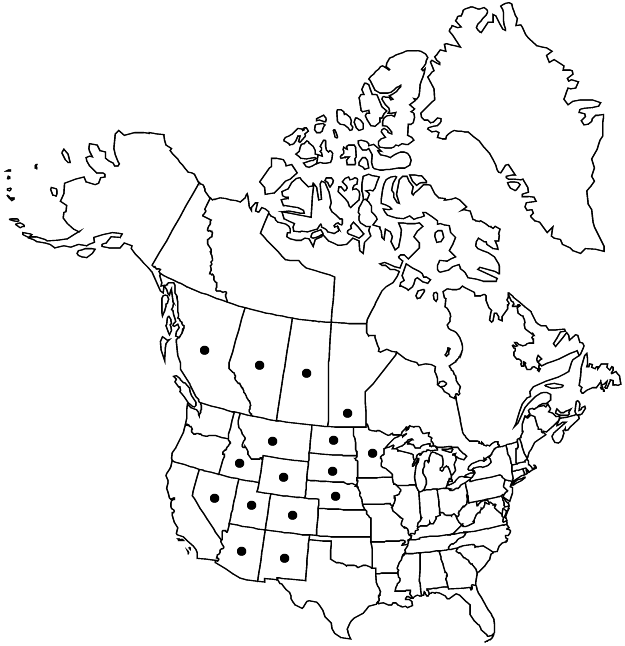Silene drummondii
Fl. Bor.-Amer. 1: 89. 1830.
Plants perennial; taproot stout; caudex branched, somewhat fleshy. Stems erect, simple or several from base, retrorsely puberulent proximally, densely so and viscid distally, with stipitate glands. Leaves: blade with stiff, appressed pubescence on both surfaces; basal petiolate, blade lanceolate to elliptic or oblanceolate, (1.5–)3–10 cm × 4–12 mm (including petiole); cauline in 2–5 pairs, blade linear to linear-lanceolate, 3–9 cm × 2–7 mm. Inflorescences 1–20-flowered, bracteate, strongly viscid-glandular or less densely pubescent, longer hairs sometimes purple-septate; bracts narrowly lanceolate, thick, 3–15 mm, herbaceous, apex acuminate. Pedicels stiffly erect, 0.1–5 cm, varying in length within same inflorescence. Flowers: calyx 10-veined, broadly tubular to narrowly ellipsoid, not inflated, 12–18 × 4–8 mm in fruit, 2–3 times as long as broad, membranous between veins, margins dentate with 5 triangular, 1.2–2 mm lobes erect in flower and spreading in fruit, apex acuminate, veins green; petals off-white to dusky pink or dingy reddish purple, clawed, equaling or to 11/2 times calyx, claw broadened distally, limb not differentiated from claw, narrower than claw, 1–3 mm; stamens included in calyx; styles (4–)5, included in calyx. Capsules 12–15 mm, equaling calyx (rarely to 11/2 times calyx), opening by (4–)5 spreading teeth. Seeds dark brown, not winged, reniform to angular, 0.7–1 mm diam., margins finely papillate; papillae triangular, slender, longer than broad.
Distribution

Alta., B.C., Man., Sask., Ariz., Colo., Idaho, Minn., Mont., N.Dak., N.Mex., Nebr., Nev., S.Dak., Utah, Wyo.
Discussion
Subspecies 2 (2 in the flora).
Subspecies drummondii is characteristically a prairie taxon, while subsp. striata is associated with the Rocky Mountains. However, the two taxa frequently appear to intergrade; e.g., in the Cypress Hills of southern Alberta and Saskatchewan, and in the southern Rockies. Variety kruckebergii appears to be a luxuriant form with a more elongate capsule and calyx. Silene invisa, a Californian species, is similar to S. drummondii, some plants of which, from Nevada and Arizona, tend to be intermediate (see note under S. invisa).
Selected References
None.
Key
| 1 | Petals equaling calyx; fruiting calyces 12-15 × 4-6 mm, 21/ 4-3 times as long as broad; seeds ca. 0.7 mm diam.; inflorescences typically (1-)3-10(-20)-flowered | Silene drummondii subsp. drummondii |
| 1 | Petals 11/ 1/ 2 times calyx and clearly exserted from it; fruiting calyces 13-18 × 6-8 mm, ca. 2 times as long as broad; seeds ca. 1 mm diam.; inflorescences typically 1-4(-8)-flowered | Silene drummondii subsp. striata |